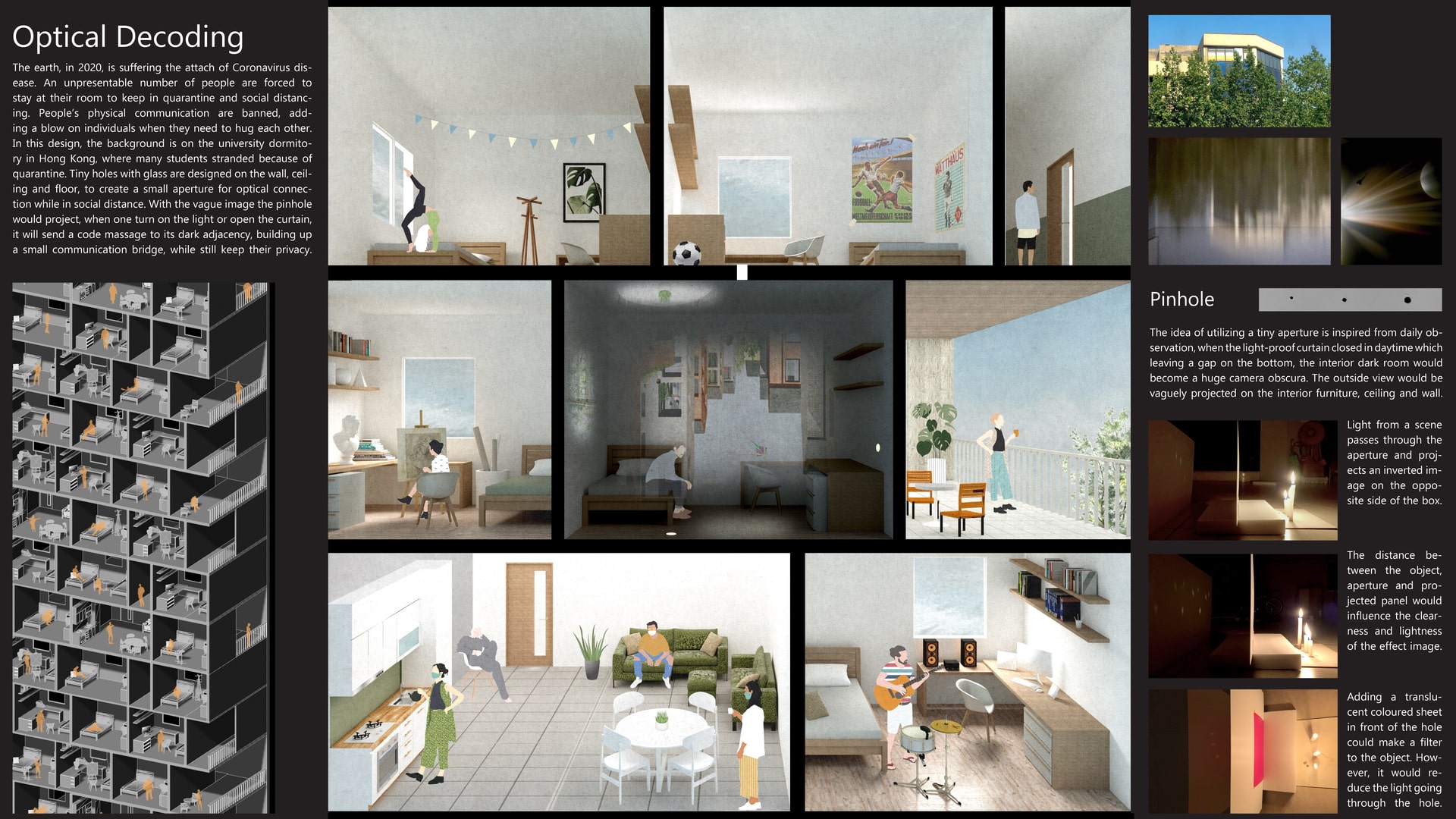Project Description
The earth, in 2020, is suffering the attach of Coronavirus disease. An unpresentable number of people are forced to stay at their room to keep in quarantine and social distancing. People’s physical communication are banned, adding a blow on individuals when they need to hug each other. In this design, the background is set to the university dormitory in Hong Kong, where many students stranded in for the quarantine. Tiny holes with glass are designed on the wall, ceiling and floor, to create a small aperture for optical connection while in social distance. With the vague image the pinhole would project, when one turn on the light or open the curtain, it will send a code massage to its dark adjacency, building up a small communication bridge, while still keeping their privacy. The idea of utilizing a tiny aperture is inspired from daily observation, when the light-proof curtain closed in daytime which leaving a gap on the bottom, the interior dark room would become a huge camera obscura. The outside view would be vaguely projected on the interior furniture, ceiling and wall. Experiments are done on how the Pinhole Image Principle work and its usage potential. 1.Light from a scene passes through the aperture and projects an inverted image on the opposite side of the box. 2.The distance between the object, aperture and projected panel would influence the clearness and lightness of the effect image. However, the shape of hole itself doesn’t matter. 3.Adding a translucent coloured sheet in front of the hole could make a filter to the object. However, it would reduce the light going through the hole. 4. Lens on the hole are potentially used to enhance the effect when the light side is not luminous enough. This design could become a new prototype in the future architecture design to solve the problem of the social isolation even after the Coronavirus disease.
